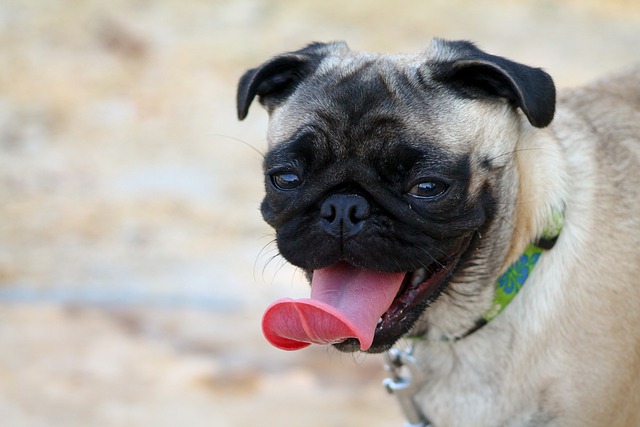Introduction: Hot spots, also known as acute moist dermatitis, are painful skin lesions that can develop rapidly due to excessive licking, chewing, and scratching in dogs. These angry, red sores require timely intervention to prevent further complications. While any dog can be affected, certain breeds and those with dense coats or a love for water play are more prone. This guide covers the causes, symptoms, treatment, and prevention of hot spots in dogs.
Understanding Hot Spots: Hot spots are localized skin infections resulting from self-inflicted trauma. Excessive scratching and licking weaken the skin, making it susceptible to infection. These sores are characterized by red, swollen, and oozing skin, often accompanied by hair loss and a distinctive border. If left untreated, hot spots can worsen quickly.
Symptoms of Hot Spots:
- Erythema (skin redness)
- Hair loss (alopecia)
- Matted fur
- Skin discharge
- Bleeding or oozing
- Scabs or crusts
- Excessive licking or chewing
- Unpleasant odor
Causes of Hot Spots: Hot spots arise from self-trauma caused by itching, pain, or discomfort. Underlying health issues like allergies, external parasites (especially fleas), immune-mediated skin conditions, or injuries can lead to hot spots. Dogs with long or thick fur are more susceptible, particularly if moisture becomes trapped in their coats.
Diagnosing Hot Spots: Identifying hot spots is usually straightforward due to their distinctive appearance and a dog’s evident distress. A veterinarian will conduct a thorough examination, checking for underlying causes. Swabs of the affected area may be examined to confirm bacterial infection.
Treatment of Hot Spots:
- Shave and Clean: Hair around the hot spot is clipped, and the area is cleansed with a mild antiseptic.
- Medications: Topical ointments, sprays, or creams (potentially containing steroids and antibiotics) may be prescribed.
- Antibiotics: Oral or injected antibiotics address bacterial infection.
- Anti-itch and Anti-inflammatory Drugs: Provide relief from itching and inflammation.
- E-collar: Prevents further self-trauma by discouraging licking and chewing.
Prognosis: With prompt treatment, hot spots typically heal within a week. Untreated hot spots can lead to severe infection and prolonged discomfort.
Preventing Hot Spots:
- Address Itching Promptly: Attend to any signs of itching or skin inflammation promptly to prevent hot spots.
- Flea/Tick Control: Use vet-recommended products to prevent infestations, a common cause of skin irritation.
- Ensure Dryness: Thoroughly dry your dog after baths, swimming, or exposure to rain to prevent skin irritation.
- Regular Grooming: Routine bathing, brushing, and grooming help maintain healthy skin and minimize potential irritants.
- Omega-3 Supplements: Consider daily fish oil supplements for skin-soothing omega-3 fatty acids, especially for dogs prone to hot spots.
Conclusion: Early detection and proper treatment are crucial in managing hot spots in dogs. By addressing underlying causes, practicing good grooming habits, and seeking prompt veterinary care, you can help your furry companion lead a comfortable and healthy life, free from the discomfort of hot spots. Regular communication with your veterinarian is essential for maintaining your dog’s overall well-being.
Hot Spots in Dogs: Causes, Treatment, and Prevention”
Introduction: Hot spots, also known as acute moist dermatitis, are painful skin lesions that can develop rapidly due to excessive licking, chewing, and scratching in dogs. These angry, red sores require timely intervention to prevent further complications. While any dog can be affected, certain breeds and those with dense coats or a love for water play are more prone. This guide covers the causes, symptoms, treatment, and prevention of hot spots in dogs.
Understanding Hot Spots: Hot spots are localized skin infections resulting from self-inflicted trauma. Excessive scratching and licking weaken the skin, making it susceptible to infection. These sores are characterized by red, swollen, and oozing skin, often accompanied by hair loss and a distinctive border. If left untreated, hot spots can worsen quickly.
Symptoms of Hot Spots:
- Erythema (skin redness)
- Hair loss (alopecia)
- Matted fur
- Skin discharge
- Bleeding or oozing
- Scabs or crusts
- Excessive licking or chewing
- Unpleasant odor
Causes of Hot Spots: Hot spots arise from self-trauma caused by itching, pain, or discomfort. Underlying health issues like allergies, external parasites (especially fleas), immune-mediated skin conditions, or injuries can lead to hot spots. Dogs with long or thick fur are more susceptible, particularly if moisture becomes trapped in their coats.
Diagnosing Hot Spots: Identifying hot spots is usually straightforward due to their distinctive appearance and a dog’s evident distress. A veterinarian will conduct a thorough examination, checking for underlying causes. Swabs of the affected area may be examined to confirm bacterial infection.
Treatment of Hot Spots:
- Shave and Clean: Hair around the hot spot is clipped, and the area is cleansed with a mild antiseptic.
- Medications: Topical ointments, sprays, or creams (potentially containing steroids and antibiotics) may be prescribed.
- Antibiotics: Oral or injected antibiotics address bacterial infection.
- Anti-itch and Anti-inflammatory Drugs: Provide relief from itching and inflammation.
- E-collar: Prevents further self-trauma by discouraging licking and chewing.
Prognosis: With prompt treatment, hot spots typically heal within a week. Untreated hot spots can lead to severe infection and prolonged discomfort.
Preventing Hot Spots:
- Address Itching Promptly: Attend to any signs of itching or skin inflammation promptly to prevent hot spots.
- Flea/Tick Control: Use vet-recommended products to prevent infestations, a common cause of skin irritation.
- Ensure Dryness: Thoroughly dry your dog after baths, swimming, or exposure to rain to prevent skin irritation.
- Regular Grooming: Routine bathing, brushing, and grooming help maintain healthy skin and minimize potential irritants.
- Omega-3 Supplements: Consider daily fish oil supplements for skin-soothing omega-3 fatty acids, especially for dogs prone to hot spots.
Conclusion: Early detection and proper treatment are crucial in managing hot spots in dogs. By addressing underlying causes, practicing good grooming habits, and seeking prompt veterinary care, you can help your furry companion lead a comfortable and healthy life, free from the discomfort of hot spots. Regular communication with your veterinarian is essential for maintaining your dog’s overall well-being.



